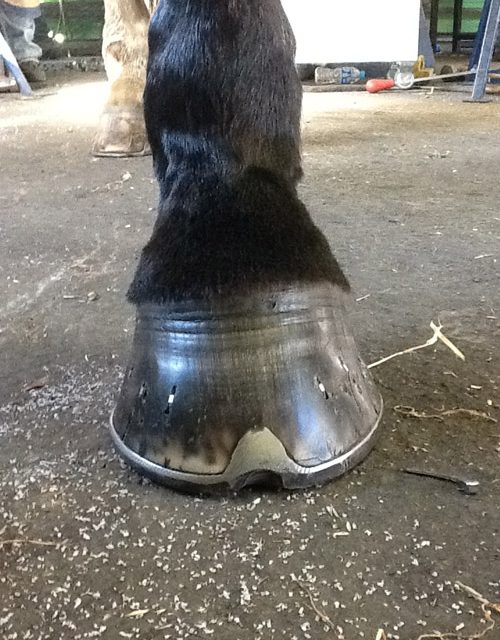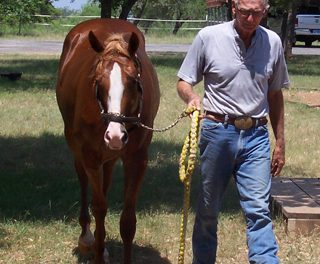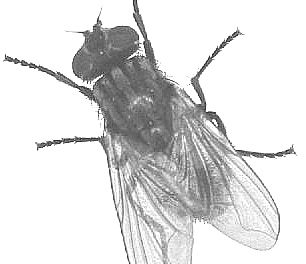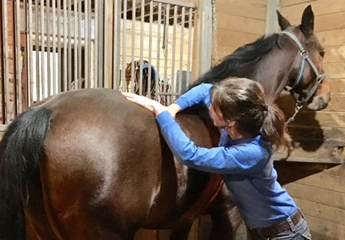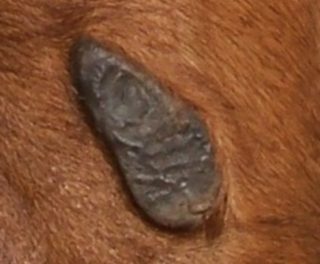 I have seen too many cases of young horses crippled with Developmental Orthopedic Disease resulting in club foot, epiphysitis and secondary hyperparathyroidism. I have also seen many older horses afflicted with low ringbone, navicular disease and worst of all, laminitis and founder. Many of these conditions could be prevented or cured if horse owners would pay more attention to a horse’s physical condition and restrict its food intake when necessary. To ignore a horse’s condition is to put the horse at risk for disease and therefore render it of little value now or in the future.
I have seen too many cases of young horses crippled with Developmental Orthopedic Disease resulting in club foot, epiphysitis and secondary hyperparathyroidism. I have also seen many older horses afflicted with low ringbone, navicular disease and worst of all, laminitis and founder. Many of these conditions could be prevented or cured if horse owners would pay more attention to a horse’s physical condition and restrict its food intake when necessary. To ignore a horse’s condition is to put the horse at risk for disease and therefore render it of little value now or in the future.
Careful monitoring and calculating of feed amounts is important for domesticated horses. You can best prove your love for your horse by calculating and feeding a reasonable ration that is healthy for it.
When you add excess energy in the form of grain and high protein in the form of alfalfa hay and or concentrated feed supplements to an over selected genetic component such as the rapid growth gene, the result is often a crippled horse. Unfortunately, these facts are often ignored by show horse fanciers who desire a tall horse at an early age.
The first thing to consider when formulating a diet for a horse is the amount of feed fed. Non-working horses should be fed about 1½ to 2 percent of their body weight. You can determine a horse’s body weight with a weight tape if a scale is unavailable.
For example, if a horse weighs 1200 pounds, then it should be fed 18 to 24 pounds per day. If a small square bale weighs 60 pounds, you should feed about 20 pounds or about one-third of the bale per day. This works out to 1/6 of a bale per feeding or 10 pounds (when feeding twice a day). Grain should be used sparingly as a carrier for medicine or supplements and a reward for catching or training – not as a part of the regular diet. Older horses may need a “senior ration” to keep their weight up.
A horse’s weight can be monitored visually using a 10-point scale developed at Texas A & M University. The ideal working horse is a “5.” A “5” is a horse on which you can’t see the ribs but you can feel them. A “1” is a horse that is skin and bones, a “10” is a horse that is roly-poly fat. A horse in good condition is a “6.”
Over-feeding it is not love! Doing so may cut your horse’s career short and subject it to a life of pain, veterinary treatment and therapeutic shoeing.
Dr. Doug Butler is a retired professor of Equine Science having taught at several universities for over 30 years, including Colorado State University. Butler has practiced the farrier’s craft for 55 years and is a Certified Journeyman Farrier (CJF). He has a PhD from Cornell University in Veterinary Anatomy and Equine Nutrition. He was the first American Fellow of the Worshipful Company of Farriers (FWCF) of England. He and his sons, Jake Butler, CJF, AWCF and Pete Butler, CJF have recently written Essential Principles of Horseshoeing. They run Butler Professional Farrier School, LLC, 495 Table Rd., Crawford, Nebraska 69339. www.dougbutler.com. 1-800-728-3826.

